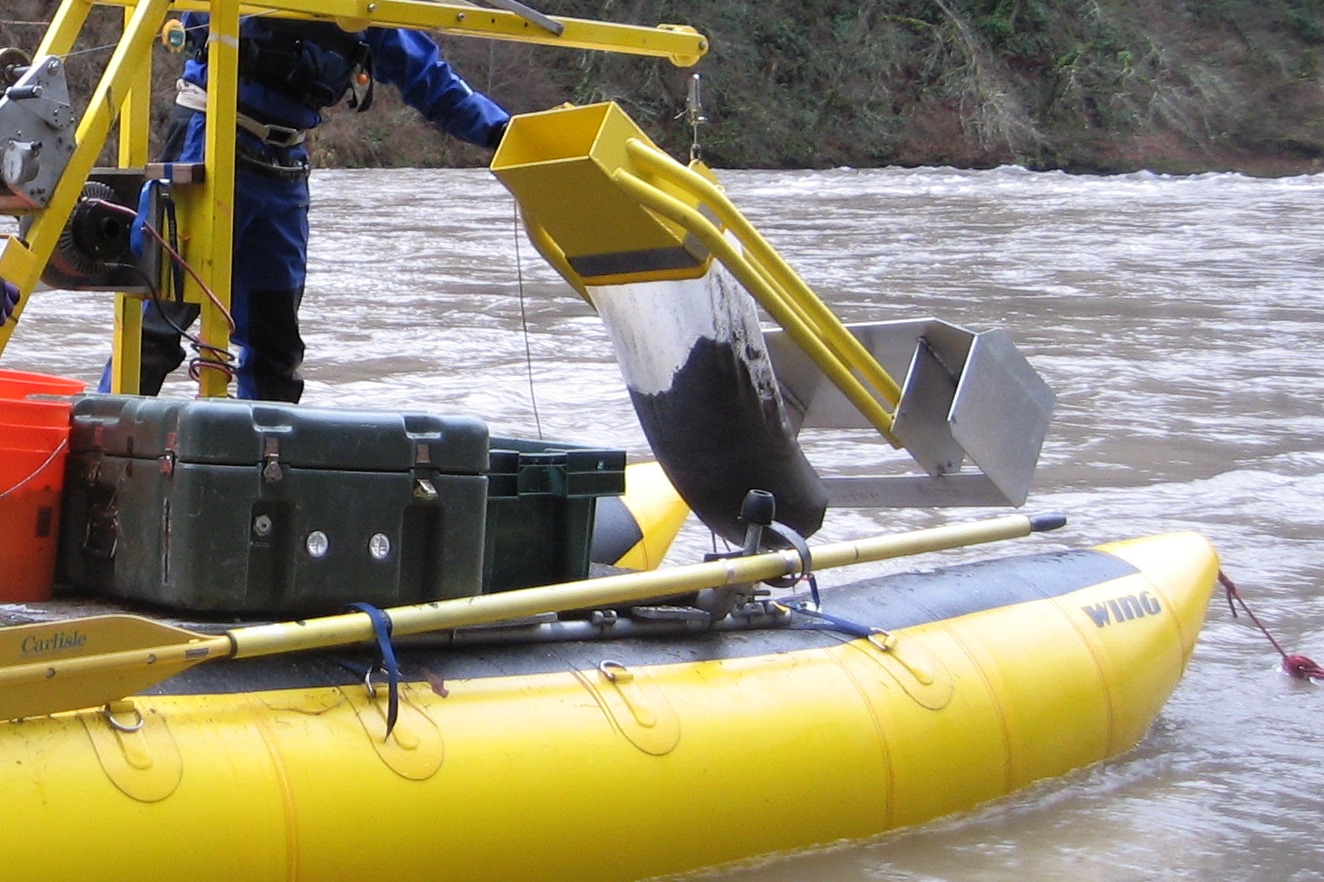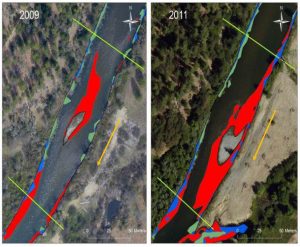The sciences of hydrology and geomorphology blend on river systems to encompass physical aspects of river sciences such as interactions between a river’s flows the the form of its channel.
THE PHYSICAL WORK GROUP
The Physical Work Group is one of several TRRP work groups focused on a particular scientific discipline, or set of related disciplines. Work groups meet at least four times per year to coordinate investigations within their discipline and to address questions directed to them. Regular or long-term investigations coordinated by the Physical Work Group include topics such as Sediment Transport.
SEDIMENT TRANSPORT
Sediment transport measurements are typically made during the spring flow release at four mainstem sampling locations. Measurements on the Trinity River form one of the most comprehensive datasets of its kind in existence. Sediment transport information is used for numerous aspects of river management and contributes to flow scheduling decisions.

Sediment transport measurements were taken at four locations on the Trinity River in the spring of 2016.
Recent studies indicate that the quantity of gravels (sediments) stored in the Lewiston area continues to increase (Gaeuman 2008; Wilcock 2010). By the end of 2009, the sediment storage level approached the level at the time of dam closure. Meanwhile, storage of fine sediments, (i.e., the sand and very fine gravels that can clog spawning beds and fill pools) continues to decrease in the upper river. Fine sediment decreased upstream from Douglas City by 7,000 tons between 2003 and 2009 (Wilcock 2010). Sampling of the stream bed surface and substrate in 2009 demonstrated that this net exporting of fine sediments has improved the quality of spawning habitats (GMA 2010).
These sediment monitoring activities demonstrate the restoration program is meeting its stated objective of increasing gravel storage and decreasing fine sediment to promote channel complexity and habitat.
BED MOBILITY
Bed scour and bed mobility monitoring is conducted using a combination of painted tracer rocks, scour chains, and topographic surveys, performed as a part of the 2009 Interdisciplinary Habitat Assessment Project (IHAP). Data tests if flow releases meet bed mobility targets for the water year types as identified in the Trinity River Flow Evaluation Study.
SCIENCE PAGES

